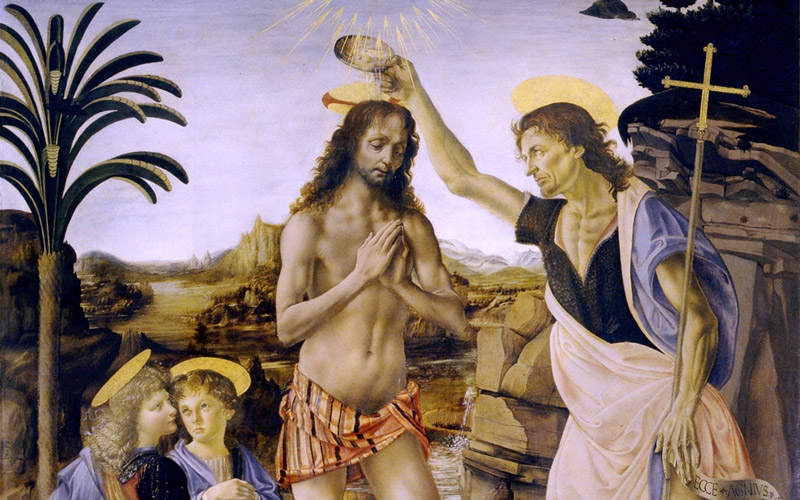
The Easter season places heavy emphasis on the first sacrament of baptism as the means by which God’s children are adopted in Christ. To emphasize this, the Church’s Liturgy provides the option for the Sprinkling Rite to take the place of the Act of Penitence at the beginning of Mass. While this rite is always permitted, it is especially significant during the Easter season as the new Passover is celebrated.
At the beginning of Easter the readings remind us of how God saved His people from the Egyptians by parting the Red Sea waters. They were led through those waters by the Column of Fire. As the Column of Fire, Christ parted the waters of the Jordan River in His baptism.
St. Paul expresses the hope of baptism as nothing short of immersion into the life, death and resurrection of Christ. As he says in the Letter to the Romans, all who were baptized into Christ enter His life, death and resurrection. They enter His life by following Jesus into the waters of baptism; they enter His death by being buried in water like Christ was buried in the tomb; and they enter into His resurrection by rising from the waters like Christ rose from the grave.
Jesus placed great importance on baptism in John 3 when He says, “no one can enter the Kingdom of God without being born of water and Spirit.” Immersion into the waters of baptism is rebirth by water into the Spirit of Christ. Baptism is the sign of the “new and eternal Covenant.”
Reflecting on this, Christians remembered how the Israelites inaugurated the Covenant of Sinai. After offering sacrifice to God as Abraham had, Moses takes the blood of their sacrifice and sprinkles half of it on the altar and half of it on the people to show that they were now kin to God like blood relatives.
Christ made it much easier on His followers. He did not abolish sacrifice as part of His Covenant. Thankfully, He told us that bread and wine would suffice to perpetuate His one sacrifice of flesh and blood. Recalling both water and blood flowed from the Lord’s side on the cross, baptismal water becomes the sign of His Covenant.
The Sprinkling Rite of the Mass uses the same element by which God saved His people in the waters of the Red Sea and which Christ consecrated in baptism. It seems to have been a common practice by the 10th century and is thought to have originated long before when the faithful would bring water to Mass on Sundays so it could be blessed and taken home for private use.
God continues to sustain His people through water. The human body itself is made of over 60 percent water. As water shortages plague many in the world, the Sprinkling Rite helps us appreciate how deeply reliant on it we are. The sprinkling of life reminds us we are blood relatives of God.

